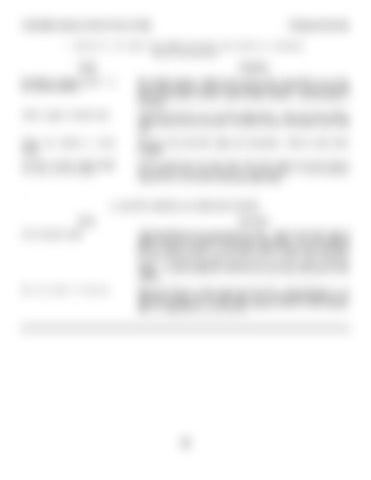HYDRAMECHANICAL PROTECTIVE SYSTEM
TROUBLESHOOTING
7. ENGINE WILL NOT SHUTDOWN WHEN CHECKING LOW ENGINE OIL PRESSURE PROTECTION CIRCUIT Cause
Correction
Fuel Shutoff Actuator Stuck In The Run Position Remove
Remove the actuator. Check surface finish of bore and polish, if necessary. Put a small amount of clean oil in the bore and on the seal. Move the rod and piston in the actuator cylinder to check for free movement. Replace actuator, if necessary.
Orifice Plugged In Diverter Valve
Disconnect oil return line (3) at the diverter valve. Crank the engine without using the start-up over-ride valve. Oil should flow from the diverter valve outlet port.
Orifice Not Installed In Control Group
Remove control group from engine and disassemble. Install or replace orifice if needed.
Oil Flow To Drain Is Not Enough To Create A Fault Condition
Install a manual operated ball or gate valve in the engine oil pressure sensing line. Slowly close the valve to add more restriction to flow. If engine shutdown does not occur, the shutoff control group needs repair.
8. SHUTOFF CONTROL UNIT DOES NOT OPERATE Cause
Correction
Drive Coupling Failure
Start the engine and run supply line at low idle. Loosen the nut that holds oil supply line (4) at the shutoff control group, see Figure 1. Oil under pressure present should be present. If not, remove shutoff control group and inspect the drive coupling. Make a replacement of parts as needed. A pressure gauge installed in oil supply line (4) [see Figure 1] can also be used to make this check. A minimum pressure of 590 kPa (85 psi) at high idle should be the reading.
Not enough System Oil Pressure
Make sure there is oil in the reservoir for the system. Low oil pressure can be caused by a faulty oil pump relief valve (18) or fuel shutoff sequence valve (15), see Schematic No. I in the System Operation section for part locations. Make a replacement or repair as needed.
242

























































































